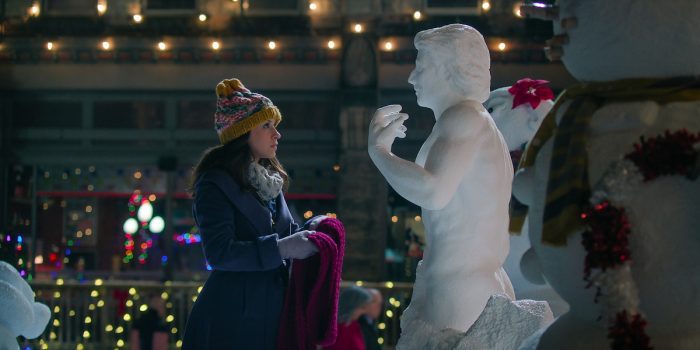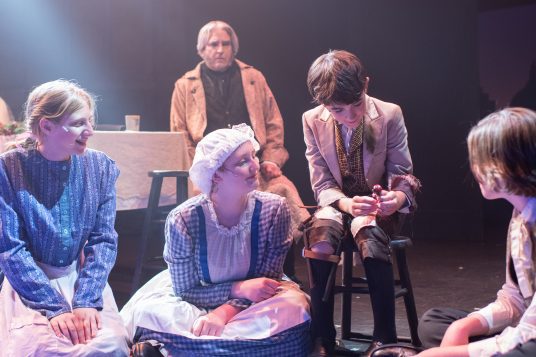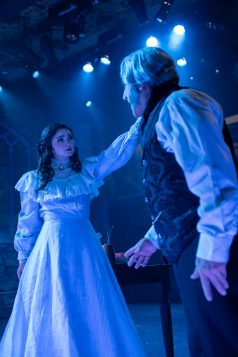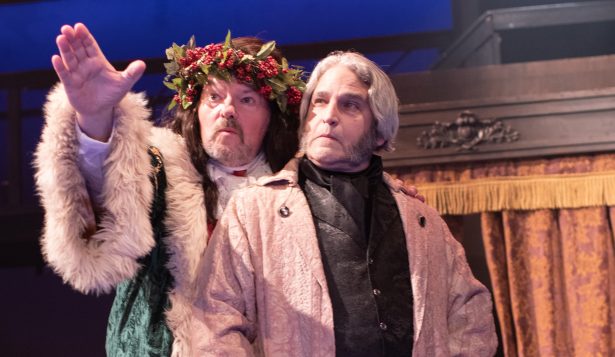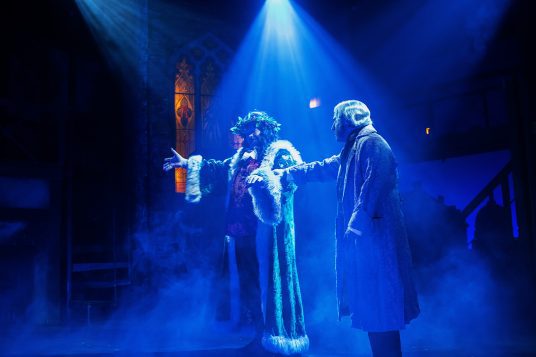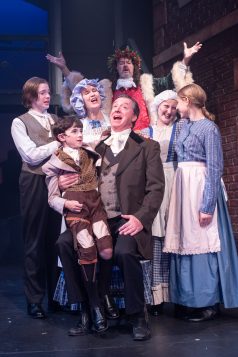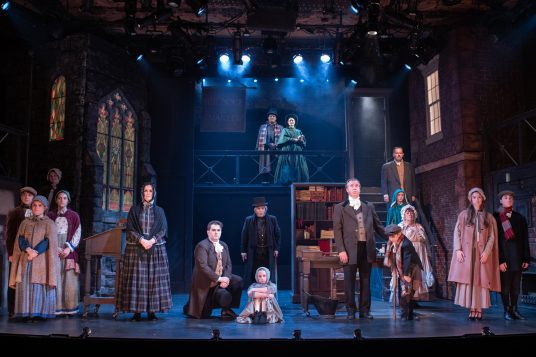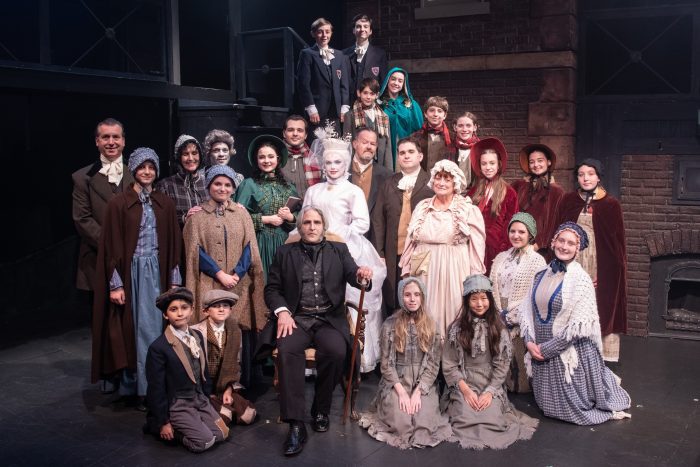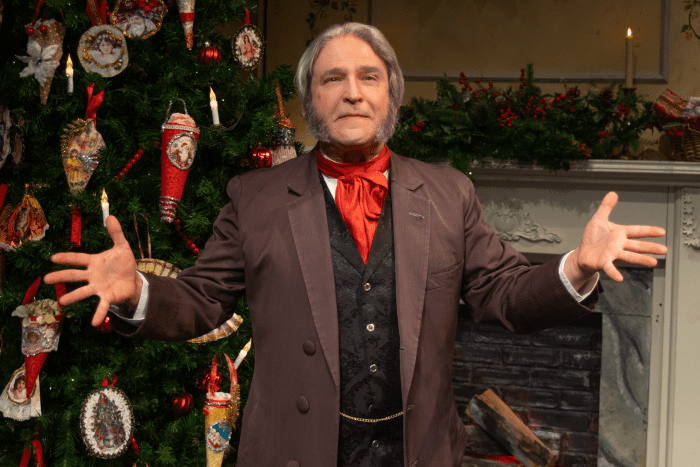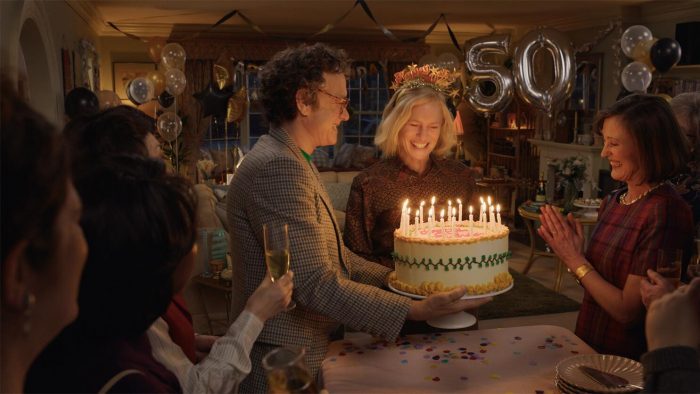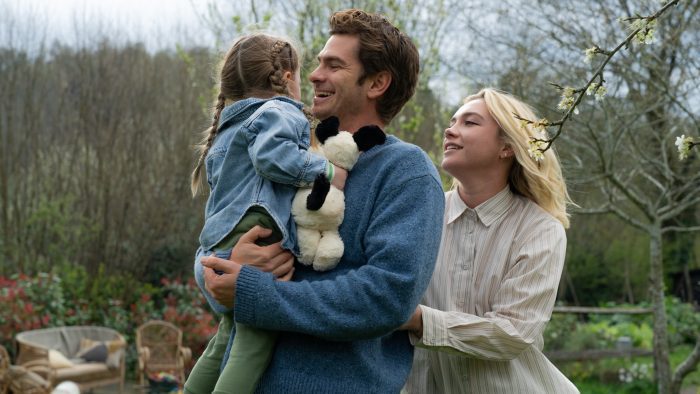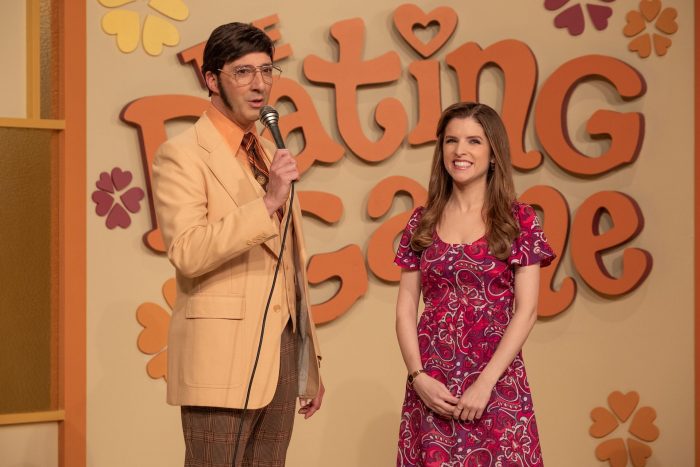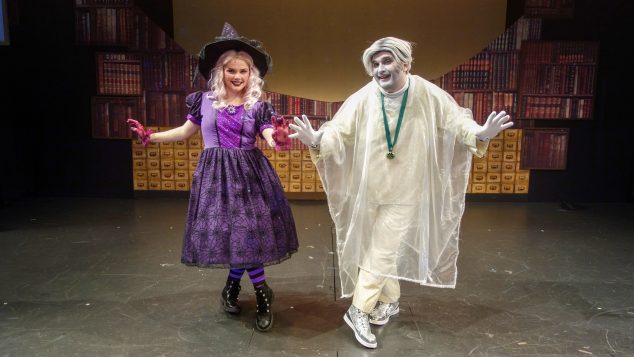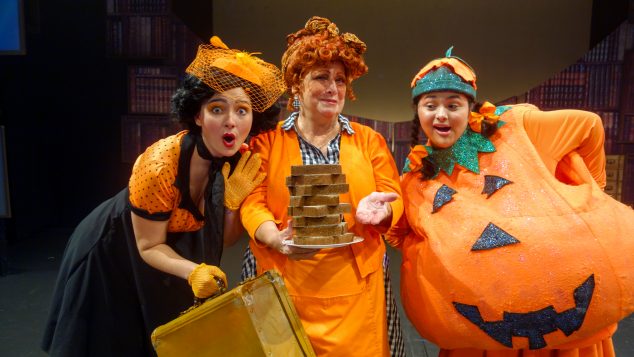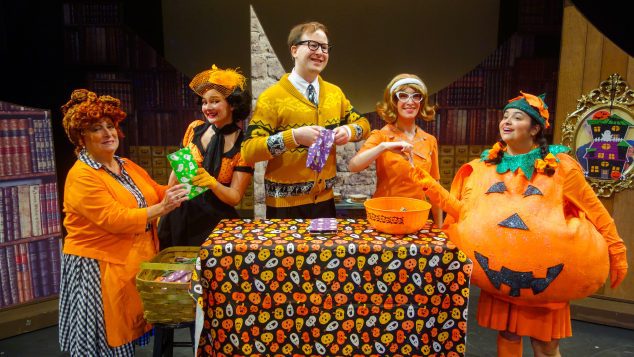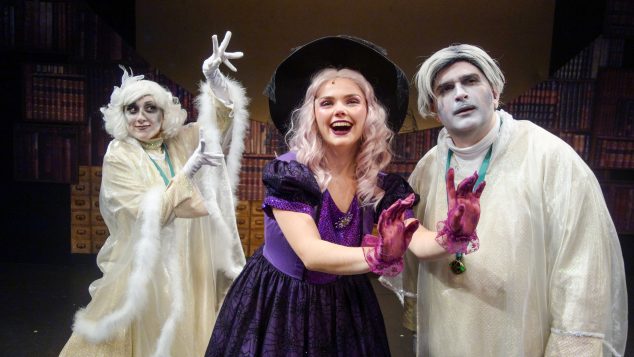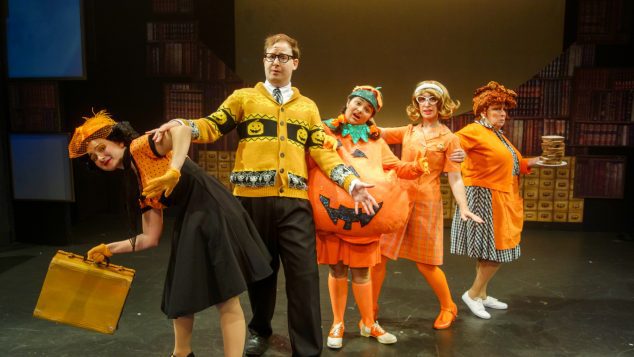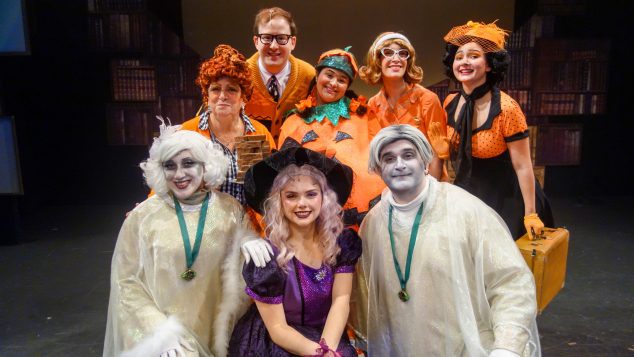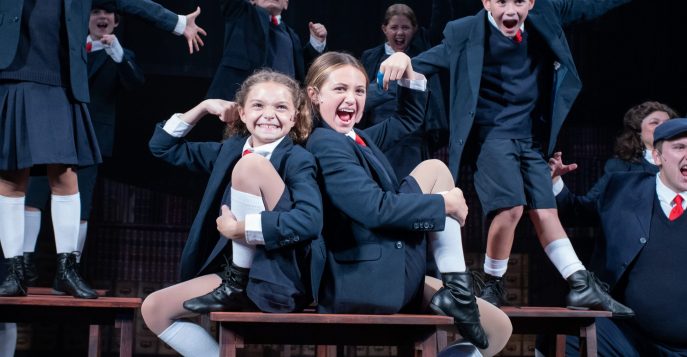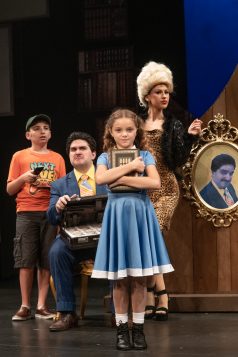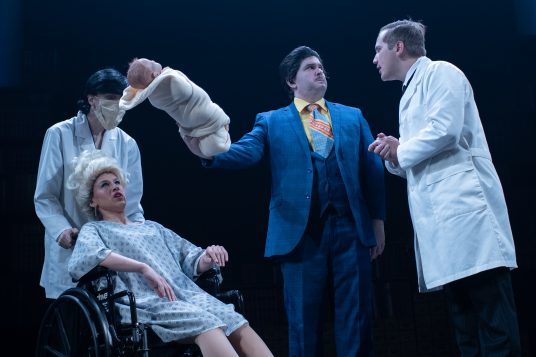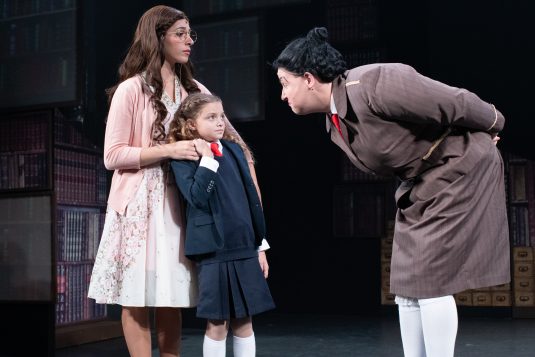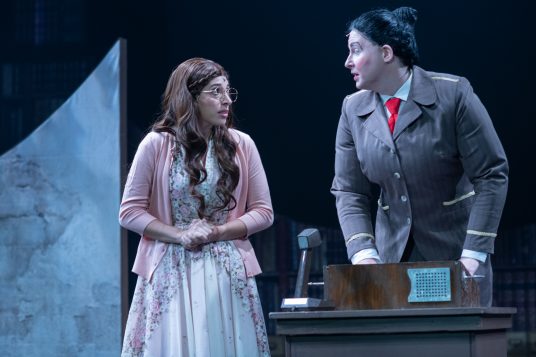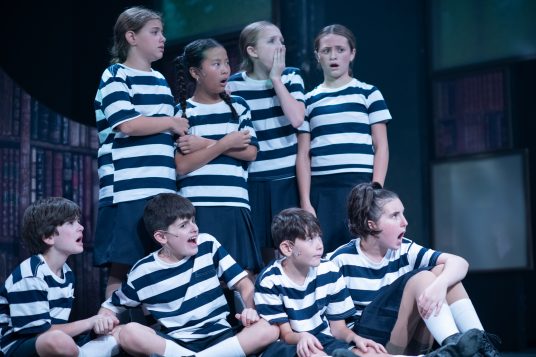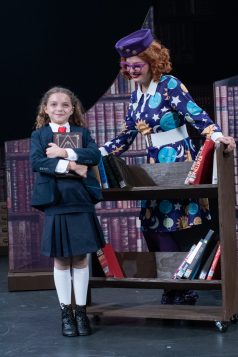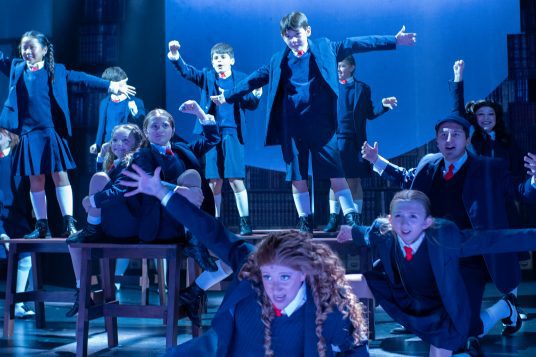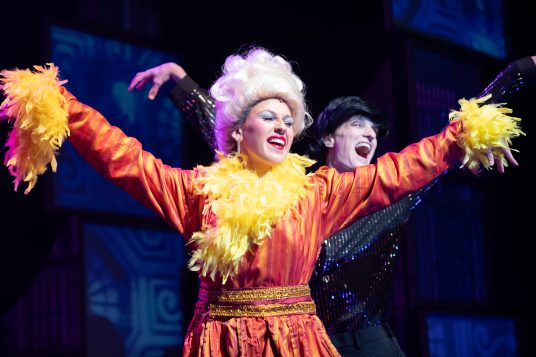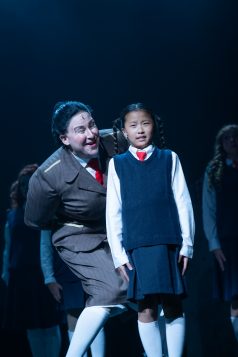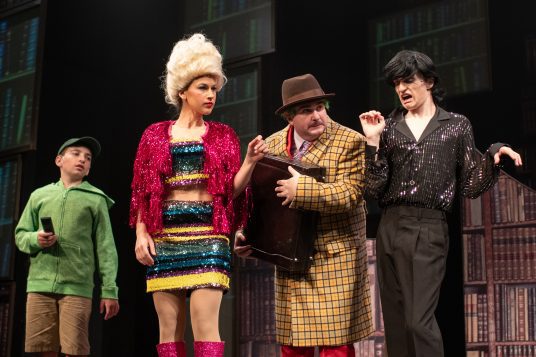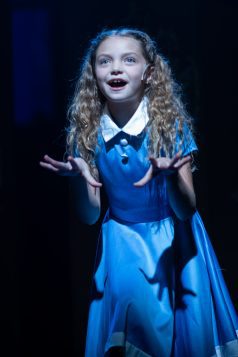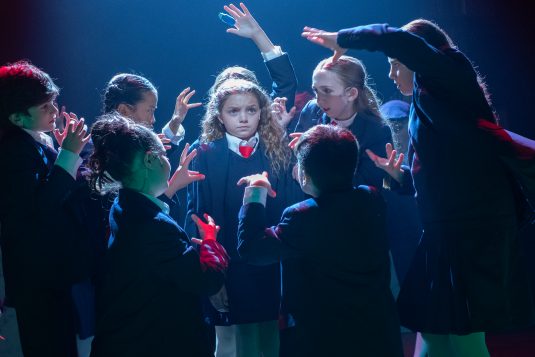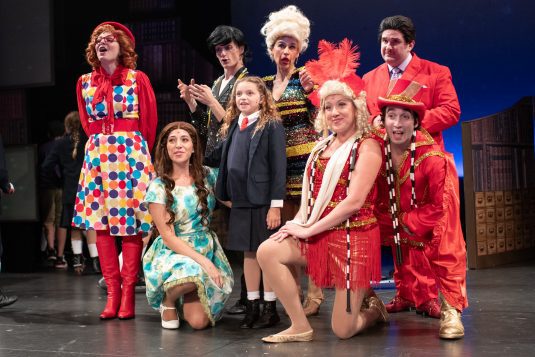Reviewed by Jeffrey Sanzel
Christmas is a time of giving: gifts, good cheer, and kind wishes. Christmas is also the time for an endless parade of holiday movies launched by every channel and streaming service. And, like a handful of coal, Netflix stuffed our stockings with the one-note, no-joke Hot Frosty.
Writer Russell Hainline’s premise is simple. Depressed widow Kathy Barrett (Lacey Chabert), owner of Kathy’s Kafé, lives in the town of Hope Springs (subtle). Still grieving over the death of her husband to cancer, her life is falling apart: the roof leaks, the heat does not work, and she no longer cooks for herself, represented by a counter of empty takeout containers. However, other than that, she seems to be doing okay. Let’s call it grief light.

Her friend, Mel (Sherry Miller), runs Reclaimed Rags, a second-hand clothing store across from the café. Mel gives Kathy a scarf with the “wise” advice: “You’ll never find the warmth unless you venture out into the cold.” Kathy graciously accepts the scarf but then notices that between two scarved snowmen is an Adonis-like ice sculpture without one. Feeling generous(?), she wraps the scarf around the sculpture, bringing it/him (Dustin Milligan) to life. (Don’t worry—the scarf covers the naughty bits.)
On the plus side, the adult fairy tale kicks into gear very quickly, without much backstory or exposition (or explanation). On the negative side, the adult fairy tale kicks into gear very quickly, without much backstory or exposition (or explanation). The writing is puerile, and Jerry Ciccoritti’s direction club fisted.
The animated sculpture crashes into Reclaimed Rags and steals some clothing, including a vest with the name “Jack.” Thus, he is called “Jack.” The next morning, Kathy finds Jack standing in front of the diner. Thinking he might need help—given his strange behavior—she brings him inside … because that is what one does with psychotics who say, “I was made of snow, now I’m made of not snow.” (Scintillating dialogue.) When he claims, “I’ve never had food before,” one questions why she does not call for help or simply runs screaming into the street. Instead, she takes him to the local doctor, Dottie (Katy Mixon Greer), who concludes that he might be the snowman he claims to be (for this, she went to medical school?). They agree not to take him to the police because the sheriff tends to overreact.
Kathy moves him into her house, and the newly sentient Jack immediately falls for her. The rest of the interminable film focuses on their growing relationship and his ability to learn anything by watching television. (This includes the discovery that vampires are afraid of crosses. Very Christmasy.)
An unpleasant and fairly ugly encounter with a snow-banked cougar, Jane (Lauren Holly), concludes with Jack’s innocent punchline, “Do you want me to get behind you and push?” Fortunately, this thread goes nowhere besides landing Jack a maintenance job at the middle school. The majority of his work is decorating the gym for the winter dance.
The film is a mix of styles—like a Christmas gift bag of assorted pointy objects. (Each is different, but all are painful in their own ways.) The occasional joke that lands is a holiday miracle. (Though a Mean Girls reference is pretty smart.) There are two montages because one is not nauseatingly enough.
A grating subplot focuses on the sheriff hunting for the person who smashed the clothing store’s glass. The officer is a parody of a spoof of a send-up of a take-off on small-town law enforcement. In a film of mostly poor moments, the usually hilarious Craig Robinson is saddled with some of the most eggnog-curdling dialogue in this (or any) film: “You can’t buy me breakfast. It might influence the investigation.” (Hilarious.) Joe Lo Truglio’s deputy sheriff makes Barney Fife look like Hamlet’s Horatio. The café/ice cube scene might rank as the unfunniest bit in holiday history.
Chabert and Milligan work well together, play it straight enough, and do not lack charm. But the material is so painfully underdeveloped and wrong-headed that they cannot mine a moment of tension in the ninety minutes. His declarations like “I still don’t understand how all of this is happening, but I am so glad you were the one who found me” are only matched by his constant statement of “I love you.” Will she say it back? Can she? Is she ready? (Spoiler alert. Yes.)
Corralling the underdeveloped townspeople, the film builds to a lazy finale—a Frosty the Snowman/E.T./It’s a Wonderful Life rip-off. (Yes, they can claim homage to the last one, but it is not.) A strong cast fails to shovel this slushy mess. (Even the outtake bloopers are not funny.)
Perhaps the film has created a new sub-genre: the Frenetically Lugubrious Christmas Fantasy Rom-Uncom. (Ho-Ho-No, Thank you.) Next year, instead of holiday fare like Hot Frosty, Netflix, please just give us the cheese-of-the month club.

